LG UR9000 Reviewed at $499.00 (55")
Product Name: LG UR9000
Product Description: 2023 4K UHD LCD TV
-
Design - 9/10
9/10
-
Video Quality - 7.9/10
7.9/10
-
Ports & Connectivity - 8.7/10
8.7/10
-
OS, Apps and Features - 9.2/10
9.2/10
-
Price / Quality - 8.8/10
8.8/10
Summary
Reviewed at $499.00 (55″)
Pros
- Great out-of-the-box performance
- Good viewing angles
- Low input lag
- webOS 23
Cons
- Low brightness
- Visible blooming and banding
- Mediocre contrast
- No Dolby Vision, DTS or HDMI 2.1
Cheapest Places to Buy :
*We are a reader-supported website. When you buy through links on our site, we may earn a small affiliate commission at no extra cost to you. Home Media Entertainment does not accept money for reviews.*
As every year most of the attention may be on the top tier models. But these are mostly for the hardcore users and a big chunk of the consumer market just seek a cheap TV for their needs. As such, in our LG UR9000 review today we will be looking at this low cost TV that belongs in LG’s new 2023 budget series.
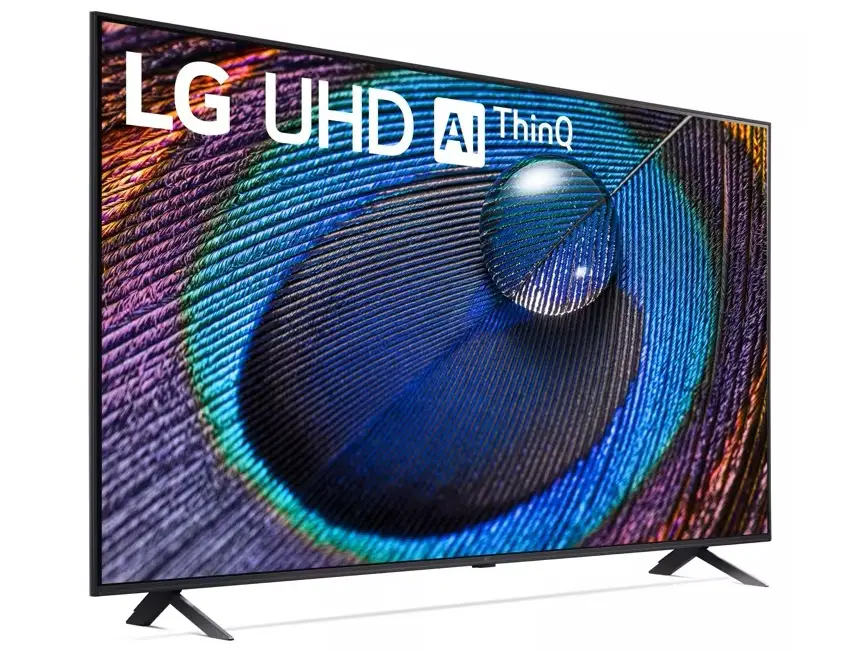
LG somewhat simplified their product lineup this year as they decided to phase out their NanoCell models. As a result the 4K UHD lineup sits right after the QNED models with the UR9000 being next to the QNED75 and right above the UR8000. The 4K UHD series miss a lot of the more advanced features we find in the more expensive models but still get some basic smart TV functionality.
On paper the UR9000 is not all that different from 2022 UQ9000. It uses an IPS panel with a 50/60Hz refresh rate. For processing we find the new a5 Gen 6 AI Processor 4K, it supports HDR10 and HLG, has Dolby Audio for sound and comes with the latest webOS 23.
Usually in these lower tier categories manufacturers don’t make a lot of changes year after year. And from a quick look the UR9000 looks awfully similar to the UQ9000. Are the two TVs the same or there are more differences to be found? Let’s start our analysis to find out.
Design
TV brands tend to use the same TV shell for multiple years, especially in these lower tier categories. And looking at the specs of the UR9000 the first thought that came to our minds is that this is just a rebranded model.
But when we looked upon the new TV we realized that the TV design is different from the one the UQ9000 had. So this is definitely not a rebrand model and LG did more changes here than we though.
Measurements
We measured the thickness of the main body at around 1.25″ (3 cm) which makes the UR9000 much thinner than the UQ9000. This difference is the result of using an Edge LED backlight instead of a Direct LED one used in the UQ9000. TVs with Edge LED backlights tend to be very thin in comparison to FALD or Direct LED ones and this is what we see here.
Its black borders are thin enough but not as much as some more premium releases. Here the TV is very similar to its predecessor.
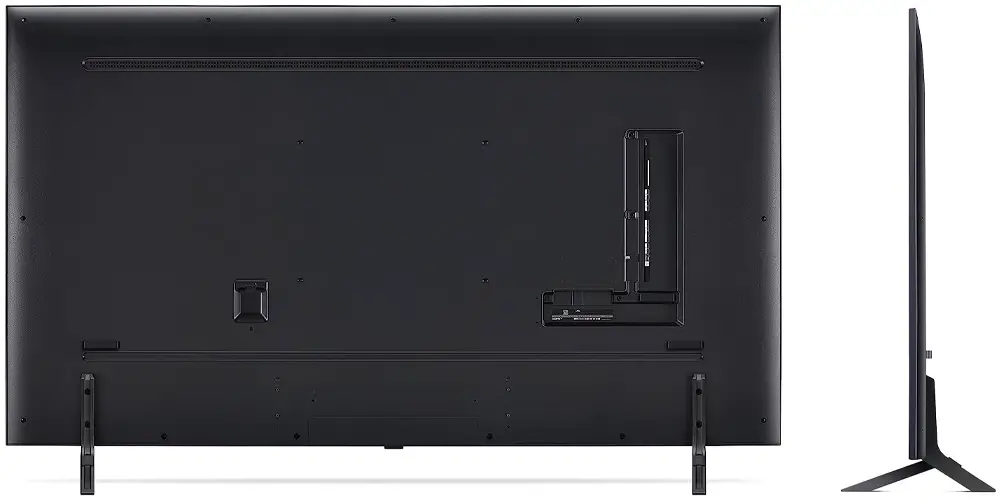
Back Side
The back side is where it is more evident that the TV uses a new shell. Obviously the differences are small but the back panel is entirely new in the 2023 release.
All connectors are again on the right side with only the power connector being separated from the rest. There are also three special clips in order to group all cables together which help a bit with cable management.
There is nothing else worthy of mentioning in a rather clean look of the back side.
Stand
As for the stand this is the same type we saw in the UQ9000 but again its design is new and this time is metal instead of plastic.
The TV is using a standard bench type stand with the two legs locked in place at the very edges of the TV. This may be good for stability but certainly will require a bigger furniture for you to place it on. The good thing is that LG has included a second position for the feet as you can attach them closer to each other. This way you can place the TV on a smaller furniture if you need to.
The back side of the stand legs are hollow so you can use them to drive your cables from the back panel clips and through the legs. This way you can have a completely cable free look.
Lastly, we measured the height left between the TV and the surface you place it on and this was about 3.3″. This height allows for almost all soundbars to fit under it so in theory you shouldn’t have any problems with that.

Remote
As for the remote, this is exactly the same one we saw in the G3 and C3 OLED TVs and very similar to the one LG used in 2022. To be honest the one we have this year is really good as LG made slight updates on it last year. And it seems that LG feels comfortable with this design to keep it exactly the same for one more year.
All functions remain the same with LG’s unique pointer system, the same universal remote functionality and smart features. Also the lower number of buttons is a welcome one while we still get six dedicated buttons as before.
These feature Netflix, Amazon Prime, Disney+, LG Channels, Sling and Amazon Alexa. The only change this year is the switch from Google Assistant to Sling, which is a rather strange one. But we have seen that in some regions this is used for other functionality. So it really depends on the market.
Overall build quality is what you should expect from a budget model.
Video Quality
Processor technology used
The TV is using LG’s a5 Gen 6 AI Processor 4K which we find in many of their lower tier models. The a5 version came out last year and it seems that LG kept the model naming for 2023 also.
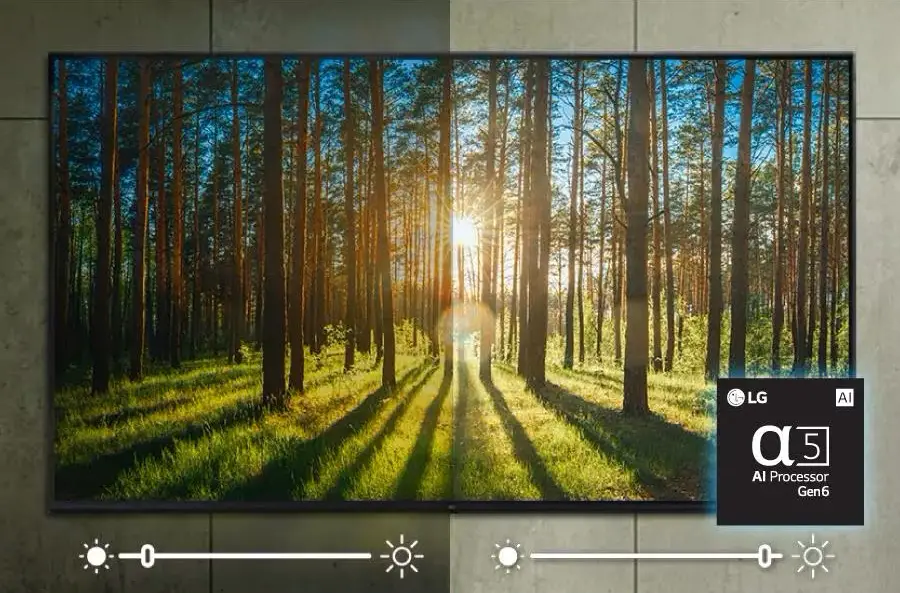
In terms of capabilities we do not know if the a5 Gen 6 AI Processor 4K is any different from last year’s 5th generation of the a5 chip. Manufacturers are very secretive of anything that has to do with their new processors and usually only stay behind their usual marketing jargon to impress the masses.
And with their focus being mostly on their best performing chip, the a9 Gen 6 processor, there is almost no information regarding the a5 version this year.
But from what we do know we cannot find any substantial differences between the two versions.
Resolution and Up-scaling
First test of the day is upscaling and we run various content to determine how capable the TV is in this area.
We run a few videos in different resolutions ranging from ultra low quality ones, some 480p DVDs, some in 720p and obviously 1080p resolutions. We tried broadcasting signals, streaming content and discs to have a better, all around idea of the TV’s capabilities.
From what we saw the TV was not particularly capable of upscaling low resolution content exceptionally well. With 1080p, upscaling worked way better but the lower the resolution was the inability of the UR9000 to upscale properly became more evident.
Audio Processing
Also the new a5 Gen 6 processor comes with AI Sound Pro which essentially is LG’s virtual technology in order to up-mix 2.0 channels audio into a full 5.1.2 channels experience. But more on sound on its dedicated section.
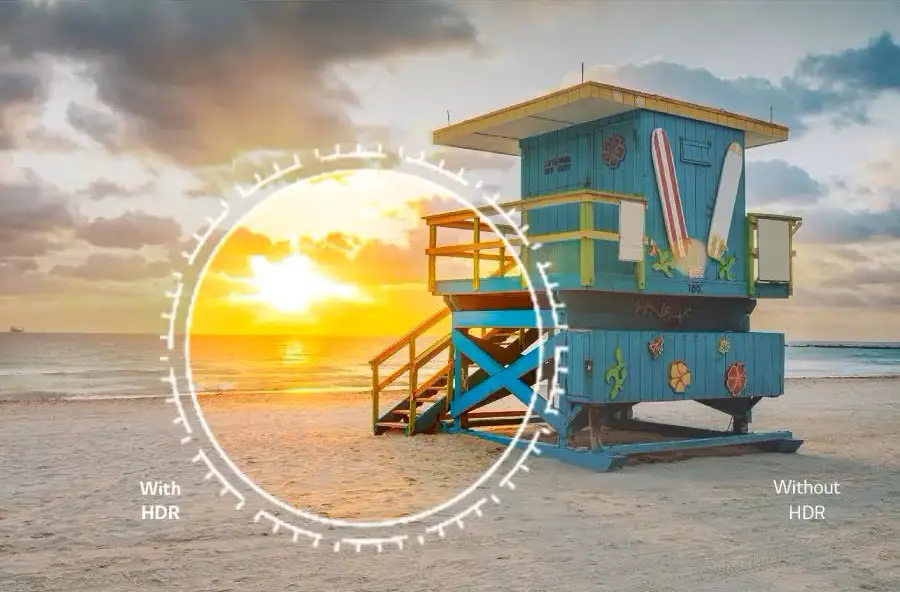
Lighting technology used
As we mentioned above LG decided to change the type of backlight used in this budget model compared to last year. As such the UR9000 comes with an Edge LED backlight with local dimming functionality.
Last year the UQ9000 used a Direct LED backlight instead.
Edge LED Explained
An Edge LED backlight means that the TV has an array of LEDs on the top and bottom of the screen. This type of backlight is obviously far cheaper to incorporate and thus used in many lower tier models.
This type of system comes with the usual advantages and disadvantages. On the one side TVs with such a system tend to be slightly thinner, as is evident in the UR9000. But on the other side we tend to see strips of light from top to bottom. This mostly happens when a bright object is displayed on a dark background and moves across the screen.
If you want a better backlight system then you will certainly have to go much higher in price. And that is the QNED85 which is the only LG TV in 2023 that comes with a mini LED backlight. Keep in mind that LG has no FALD equipped TVs this year. So it’s either an Edge LED one or a much more expensive mini LED type.

Number of Dimming Zones
From what we saw it seems that this TV has six dimming zones that are used by its local dimming system.
Blooming & Zones Transitioning
Unfortunately the local dimming does not work very good. There is a lot of blooming visible in dark scenes which really becomes bothering. When you turn local dimming off things are better but this also has a negative impact on the contrast.
In the end there is no better option. You just have to choose what you like better. So our suggestion is to try both with local dimming on and off and decide for yourself what looks better to your eyes.
Brightness / Contrast
Next we will be looking at the brightness of the unit. As usual, we used the Expert (Dark Space) mode for SDR and Cinema HDR for HDR content.
SDR and HDR Measurements
First test is the SDR brightness over a 10% window and the number we got was 297 nits which is very average, even for SDR. For a dark room it may be ok but when the TV is used in a very bright room it surely cannot do much to combat glare.
We then switched to HDR content and in our HDR brightness over a 10% window test we measured 372 nits. Again this is disappointing and the TV cannot present HDR as it should. Keep in mind that the HDR measurement was taken with local dimming set to off. When this is turned to High setting, brightness spiked to around 500 nits but this resulted in major blooming.

Automatic Brightness Limiter (ABL)
As with most TVs nowadays the UR9000 comes with an Automatic Brightness Limiter (ABL). This system lowers the overall brightness of the screen when large parts of it become very bright for a long period of time.
The UR9000 managed to maintain its brightness no matter how long a bright image displayed on screen. We didn’t notice any major changes in the brightness either it was SDR or HDR content. And this is a behavior we have observed in many TVs with low brightness output.
In these cases the ABL is not so much necessary as the brightness output is far too low for the ABL to kick in. And this is the reason why we did not notice changes at all compared to TVs with very high brightness limits.
Last Year Comparison
Compared to last year the TV did perform better in the brightness tests. As a result the UR9000 can be considered an improvement.
EOTF Tracking
Brightness levels did not follow the EOTF reference values very much. And this was something we noticed both with local dimming off and on.
The UR9000 displayed raised black levels while the mid area appeared less bright than it should. If you add to these the sharp roll-off towards its low peak brightness levels, reveals that the TV misses a lot of details in the end.
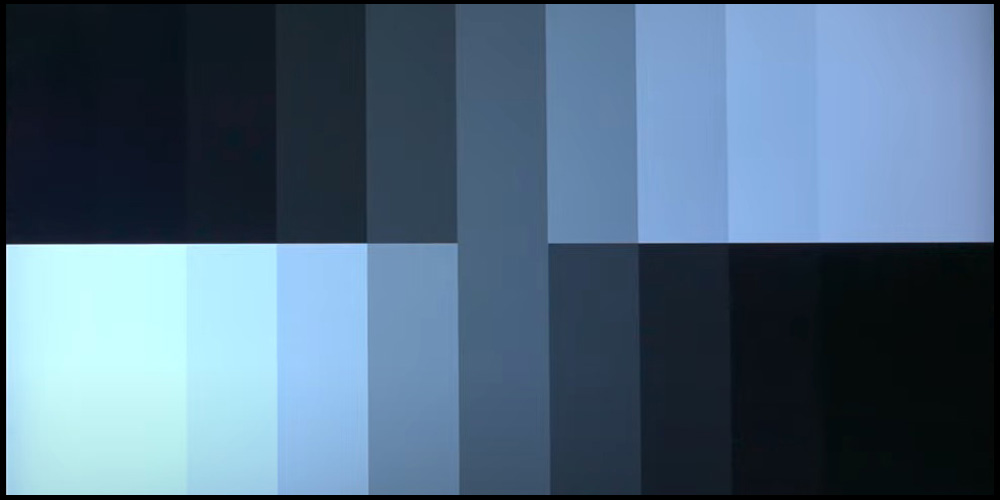
Contrast Performance
In terms of contrast the UR9000 comes with an IPS panel. This means that the TV does not have very good contrast as this is a characteristic of all IPS like panels. The result of this is that you get blacks that look more grey-ish that true deep blacks, which is particularly evident if you use the TV in a completely dark environment.
From what we saw contrast on the UR9000 was slightly better than last year’s model but the difference was really small. Also keep in mind that contrast will behave differently depending on the local dimming feature.
With it turned off contrast is lower but you somewhat get less blooming. When you turn local dimming on contrast is noticeable better but you will get much more blooming in return.
Viewing angles
The UR9000 is using an IPS panel which is good with higher viewing angles. It cannot reach the extreme angles of OLED technology but IPS and IPS-like panels perform far better than any VA ones will ever be capable of.
For this TV specifically we would say that a maximum of 30-35 degrees is the best you can get as anything more and the image quality will start to deteriorate a lot.
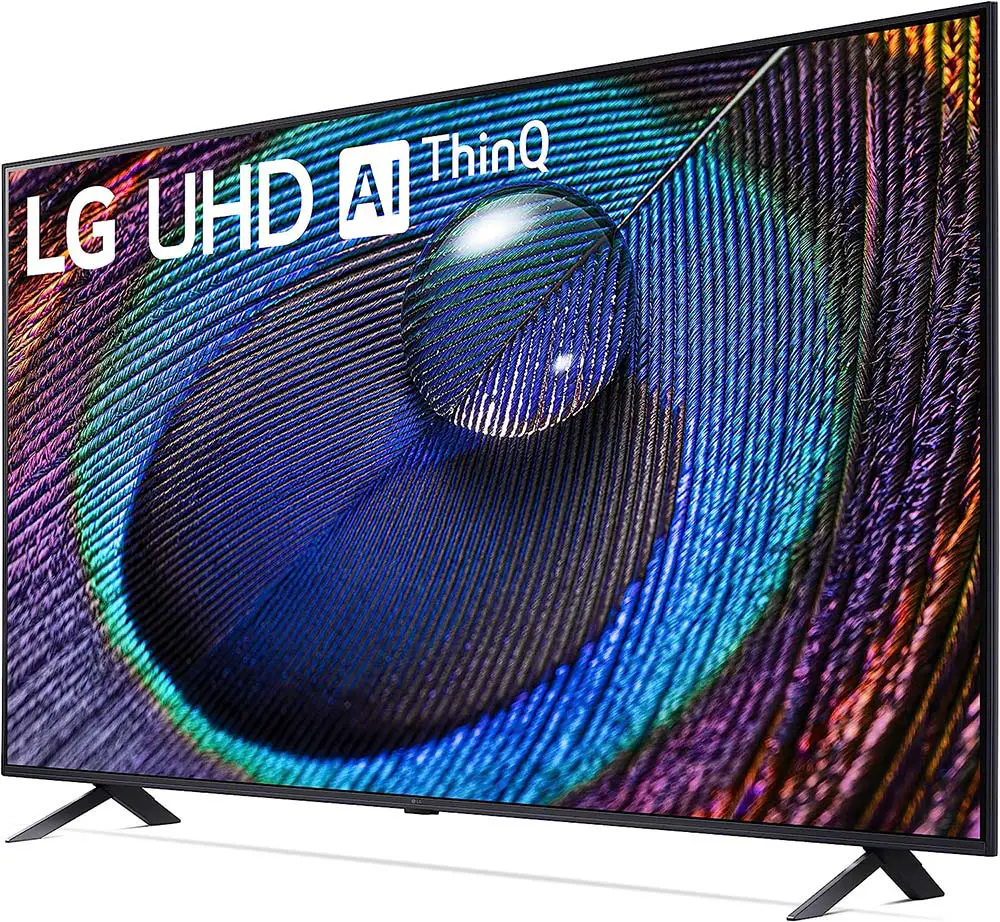
The TV is lacking any kind of wide viewing angle technology that we see in some of the top tier models but for its class it fares pretty good to be used as a family TV.
Overall the TV behaved very similar to the 2022 UQ9000 making this model an ideal low cost family TV.
HDR support
As far as HDR support the UR9000 gets only the basics which is the same as all low tier UHD releases from LG the last few years and exactly the same with the UQ9000. We only get the basic HDR10 that is required for 4K UHD playback along with HLG that is used mainly for broadcasting.
And along with Dolby Vision, gone is also the feature we saw in the LG G3 and LG C3 called Dolby Vision IQ that could automatically adjust the Dolby Vision dynamic tone mapping according to the ambient light in the room. No reason obviously to have that since Dolby Vision is completely absent in this model.
What is available in the UR9000 is HDR10 Pro which basically adjusts the brightness and color levels of every frame. Basically this is LG’s dynamic tone mapping feature for HDR10 content.
This shouldn’t be confused with HDR10+ which is completely missing from all LG TVs, and is similar to Dolby Vision. HDR10+ and Dolby Vision use dynamic metadata for each frame while with HDR10 Pro the TV itself has to process each frame individually and apply its dynamic tone mapping.

Color coverage
Unfortunately something that we see a lot in these low budget TVs is the low color coverage they can achieve. Manufacturers don’t directly mention it but these TVs cannot display wide color gamut which is essential for 4K HDR viewing. And this is another grey area these so called HDR TV sets have. As they may be able to display HDR but without wide color gamut they shouldn’t be considered true HDR TVs.
In our test we measured 78% coverage of the DCI-P3 color space which is good and similar to the UQ9000. On the wider REC.2020 color space we got a coverage of 56% which is mediocre and practically means that the TV does not support Wide Color Gamut.
Not much have changed here. Both this year’s and last year’s models performed equally with very minor differences.
DeltaE Errors
Before calibration the TV had really good color accuracy. Most colors managed to stay under the DeltaE limit of three. Gamma and color temperature were close to their target values but they needed some extra tweaking. White balance on the other hand needed some more attention as there were more notable inconsistences.

After calibration the TV was almost perfect. All the minor problems we saw before calibration we were able to fix without much effort. Colors were all accurate and gamma, color temperature and white balance were all within the desired limits.
From all the above we can say that if you are a casual user that doesn’t like to go into much trouble calibrating this TV you will surely appreciate the UR9000’s accuracy. But even if you want to get this little extra after calibrating it, doing so can be a rather easy process making this TV a very user friendly model.
Color Gradients
Color gradients in the UR9000 were mediocre at best. We noticed banding in almost all shades but it was more noticeable with dark grey colors. After we tried some real world content we could say that this was not so much evident or bothering. But overall banding is visible is specific scenes.
There is also a Noise Reduction function in case you do see it. But if you enable it some detail is lost and in general we didn’t like this feature much.
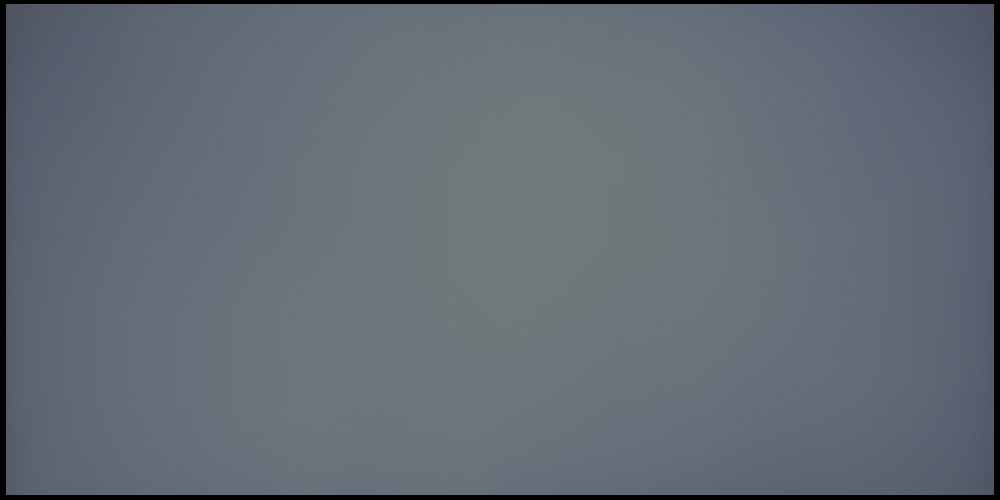
Panel Uniformity
Panel uniformity was average in the UR9000. Gray uniformity tests revealed some small differences between the corners and the center of the screen. While during our black uniformity test the screen revealed some major clouding which is really distracting in our opinion.
What we saw here was very similar to the UQ9000. There are some differences between the two models in this area but more or less they behaved the same.
Motion performance
We move on to our motion performance tests. The UR9000 comes with a 60Hz (or 50hz depending the region) panel along with a backlight dimming frequency that changes to either 120Hz or 480Hz.
The backlight dimming frequency seems to depend on the picture mode you chose and from what we saw some of them would flicker at 120Hz while others at 480Hz.
When using the TV without any motion interpolation motion was ok but not as good as we would like it to be. Blur was very much obvious with fast moving objects and the average response times of the panel do not help with this TV.

Motion Interpolation
The TV comes with the standard Motion Interpolation in order to smooth out motion. This you can enable from the TruMotion setting and by adjusting the De-judder slider. In contrary to higher tier models the UR9000 doesn’t have the second De-blur slider showing the limited capabilities we get here.
With motion interpolation enabled the TV was capable of smoothing the motion of various test content we tried. But as always the results depend a lot on each scene. Slow paced scenes fared far better. While when we got a lot of action the UR9000 really showed its limitations with a lot of artifacts making their appearance.
Black Frame Insertion (BFI)
As was the case with the UQ9000, the new UR9000 has no Black Frame Insertion (BFI) available. So the standard Motion Interpolation through the TruMotion setting is your only option here.
Overall Motion Impressions
From what we saw the UQ9000 was slightly better in the motion performance tests compared to the new UR9000. Both TVs have similar features and capabilities. But the UQ9000 was definitely smoother without motion interpolation enabled. Disappointing, as we were at least hoping to get similar kind of performance here. The UR9000 feels like a downgrade in this area.

Input lag Measurements
Let’s take a look at the TV’s input lag performance next.
According to our measurements the TV displayed an average of 10.6ms input lag in both 1080p and 4K resolutions at 60Hz. There is no support for 120Hz so this is the best you get. We took both measurements after we obviously switched to Game mode.
Outside of Game mode we got an average of 82.0ms which is obviously high but still usable for casual and offline gaming where response times are not so crucial.
From the numbers above the UR9000 performed very close to the UQ9000 with Game mode enabled. It seems the improvement we have this year is outside Game mode as the UR9000 had much lower input lag now. This means that gaming in other picture modes with the UR9000 would perform much better. Although still very high we can see some games being playable like this. So it’s good to see this minor improvement.
Other Gaming Features
We should also not forget to mention that the TV supports Auto Low Latency Mode (ALLM). And both the PS5 and Xbox consoles support this feature, so the TV will switch to Game mode automatically.
HGiG Mode is not missing either. This is HDR Gaming Interest Group’s technology that ensures you enjoy HDR games the way that their creators and developers intended.
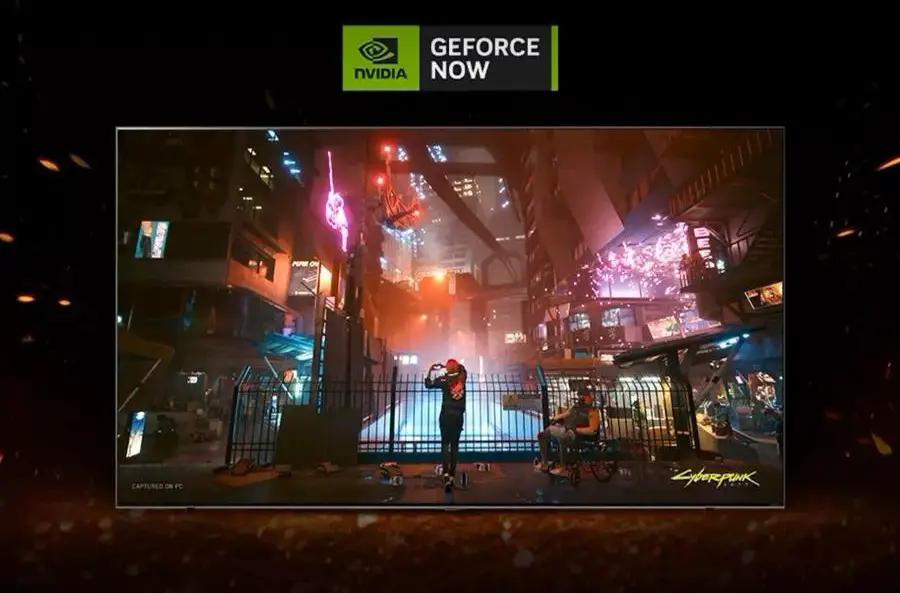
VRR Support
Also keep in mind that the UR9000 doesn’t have any kind of VRR support. Which is a bit disappointing but not entirely unexpected in this price. If you are a gamer and would like to have VRR then you should definitely look for a higher tier TV than this.
And since we talk about gaming we should not forget to mention that the UR9000 does support cloud gaming. Unfortunately this year we only get Geforce Now. Google Stadia that was available in the UQ9000 is no longer available as Google decided to shut down the service.
Obviously for Geforce Now you will need to have the appropriate subscription and gamepad but having built-in support is another plus.
Trying Out a Few Games
For testing the TV’s gaming capabilities we tried a couple of games. The first one was F1 2022 while the second was Dead Space. Both of them were used in 60Hz mode as the TV cannot do anything more than that.
Obviously we tested both games with Game mode enabled. And from what we saw the TV did really good with no major issues. Our commands registered on screen very fast and there were no frustrating delays. For a low cost gaming TV the UR9000 is not bad at all.

Overall Image Quality Impressions
After going through all our tests our conclusion is that the UR9000 is a bit of a mixed bag.
On the one hand the UR9000 is definitely brighter than the UQ9000 and has slightly better contrast. On the other hand the UQ9000 had better brightness tracking and motion performance.
In all other areas both TVs are equals or extremely close to each other. So we cannot say that one is a clear winner as each has its own strengths and weaknesses.
Audio Quality
All these low cost TVs use very basic audio systems and the UR9000 is no different. What we have here is exactly the same we saw in the UQ9000 so we do not expect any major changes in this area.
Audio System – Channels & Power Rating
The TV uses a 2.0 channels configuration with 20 watts of power output. The speakers are naturally placed at the bottom of the panel looking downwards.

Audio Formats Support
The TV supports Dolby Audio but there is no native Dolby Atmos. At least you can pass-through Dolby Atmos through the included eARC to some Dolby Atmos soundbar or dedicated sound system.
Unfortunately, while LG brought back DTS support this year, this is not the case with the UR9000. It seems that only some higher tier models get it in 2023, which is a shame really.
Audio Features
A feature we find in all LG TVs is AI Sound Pro. This is responsible for up-mixing legacy audio into virtual 5.1.2 channels surround sound. Basically this is a virtual technology that tries to create surround audio without surround speakers.
The end result is a mixed bag really, as is the case with most virtual sound technologies. There are moments it can make the sound feel more immersive but it cannot simulate a real surround audio system, not even close.
Another returning feature from last year is Bluetooth Surround Ready. With this you can use the built-in Bluetooth to connect rear speakers to the TV. But keep in mind that by adding a couple of rear speakers doesn’t mean that you can have a true 5.1 channels audio system.
As the TV will use only a legacy stereo tracks and up-mix that to all the available speakers along with the rear Bluetooth ones. As a result the surround effect is not as good or precise as you would expect. But certainly is slightly better than the simple two front channels.
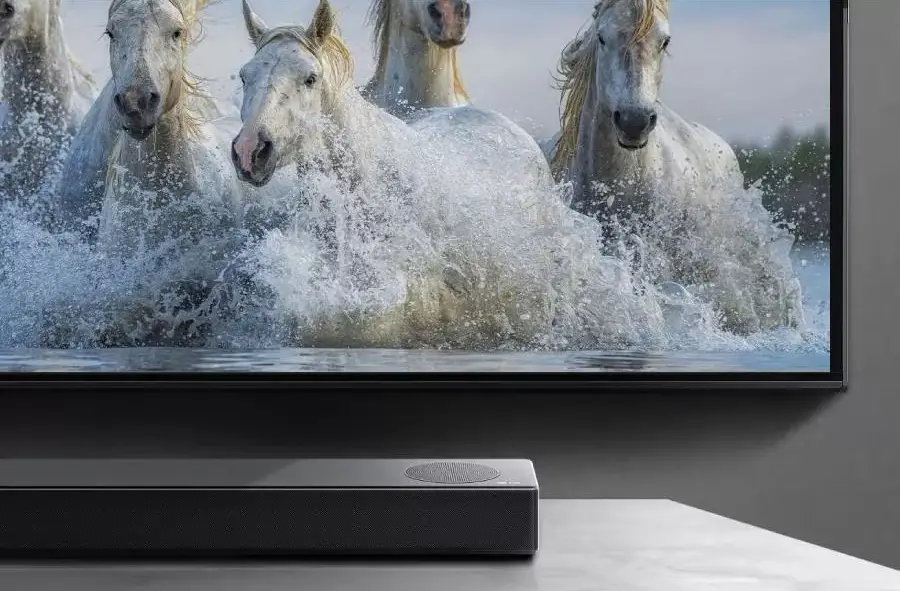
Overall Audio Performance Impressions
We tried various content including broadcast material, sports, some TV series and movies and our opinion hasn’t changed from previous reviews. Such a system is good for casual viewing only. Volume can go up high, dialog was clear enough but the output was stripped of any cinematic values.
The sound lacked in depth, low end extension and surround activity. As a result when watching a film there was no immersion. Everything seemed flat. But for all other content the UR9000 is just fine. If you really want to up the immersion with films then a soundbar or full surround system is a must.
Ports and Connectivity
Next we will be looking at all the connection ports available. The UR9000 features a slightly different layout than its predecessor so let’s go over what we have this time.
Starting from the top we get a USB port for connecting external storage devices. Next there are three HDMI ports and then another USB port. Lastly we find the antenna port at the bottom. All the above ports look sideways,
The difference this year is in the second group of ports. This time, instead of looking backwards they look downwards. Here we find an optical audio output along with an Ethernet port for wired connection to your local network.
HDMI Specifications
Nothing has changed here as the UR9000, being a low tier offering, comes only with HDMI 2.0 ports. This means that you do not get any of the gaming centric features these have.
At least we do get eARC in HDMI 2 which allows you to pass audio to an external sound system.
Connectivity Observations
Again, the Ethernet port is still the usual 100Mbps one. But this does not surprise us, as we have yet to see a TV making the transition to Gbit adapters.
Streaming requirements and internet connections have greatly advanced the last few years. This made the 100Mbps limit obsolete a while back. And while most TVs update their WiFi capabilities (some models even support WiFi6 this year) the Ethernet adapters are still the same.
And lastly the USB ports are the older 2.0. Don’t expect to get a USB 3.0 when even top tier TVs still use this archaic version.
Wireless Capabilities
When it comes to its wireless capabilities the LG UR9000 supports WiFi5 (802.11ac) along with Bluetooth 5.0 which is similar to other LG TVs this year.
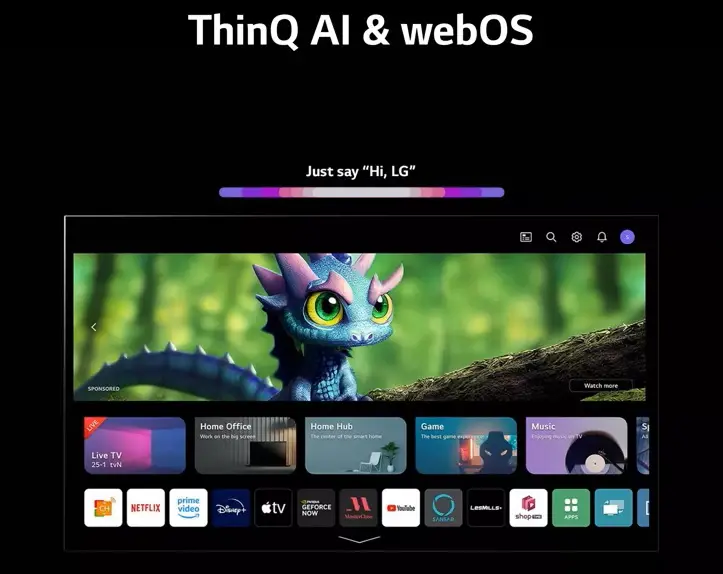
OS, Apps and Features
The new UR9000 is using LG’s latest webOS 23, which is found in all their 2023 releases. While the OS is fundamentally the same it seems that LG decided to make a facelift this year. The previous design, that we got in 2021, could use some updating. So LG’s plan was to improve things a bit.
What we have here is exactly the same software we experienced in our recent LG C3 and LG G3 OLED reviews. So this part of our review will be similar and we will make changes wherever we deem necessary.
WebOS 2023
The WebOS’s UI is still taking up the whole screen and provide you with far more visual information than any of the old versions ever did. This was a change made in 2021 and seems to continue well in 2023.
The latest webOS looks a lot like Google TV and its layout. It seems that smart TV platforms opt for a more personalized experience and as such the new webOS 23 tries to provide you with options that are tailored for your viewing habits. As such there are personalized ads, recommendations based on your viewing patterns both for streaming services and broadcasting channels and even shopping suggestions.
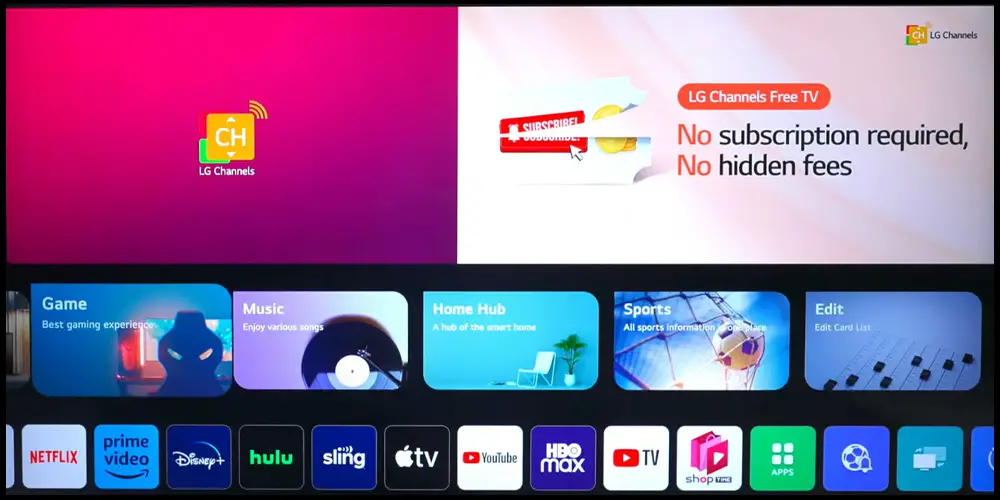
One feature that appeared for the first time in 2022 was user profiles. And obviously LG kept it for 2023 also. With it each family member can have their own favorite settings and streaming apps. Keep in mind that these user profiles do not extend to the image settings of the TV itself as these will remain universal.
In 2023 version the main screen is basically divided into three sections. At the top we get sponsored content. Below it there is a row with quick tabs that you can select and lastly a row of installed apps. Each quick tab opens specific sections like Games or Music for fast access.
In the second screen, which you can access by pressing the down button, you will find highlighted content as well as the “Now Streaming” section. This includes tabs from various streaming services among others.
Home Hub
For another year we find what LG calls Home Hub, previously called Home Dashboard, which is a nice little feature that lets you have an overall look at all the connections of the TV. From last year the Home Dashboard has been fully intergraded into the webOS Home screen making its access faster than before.
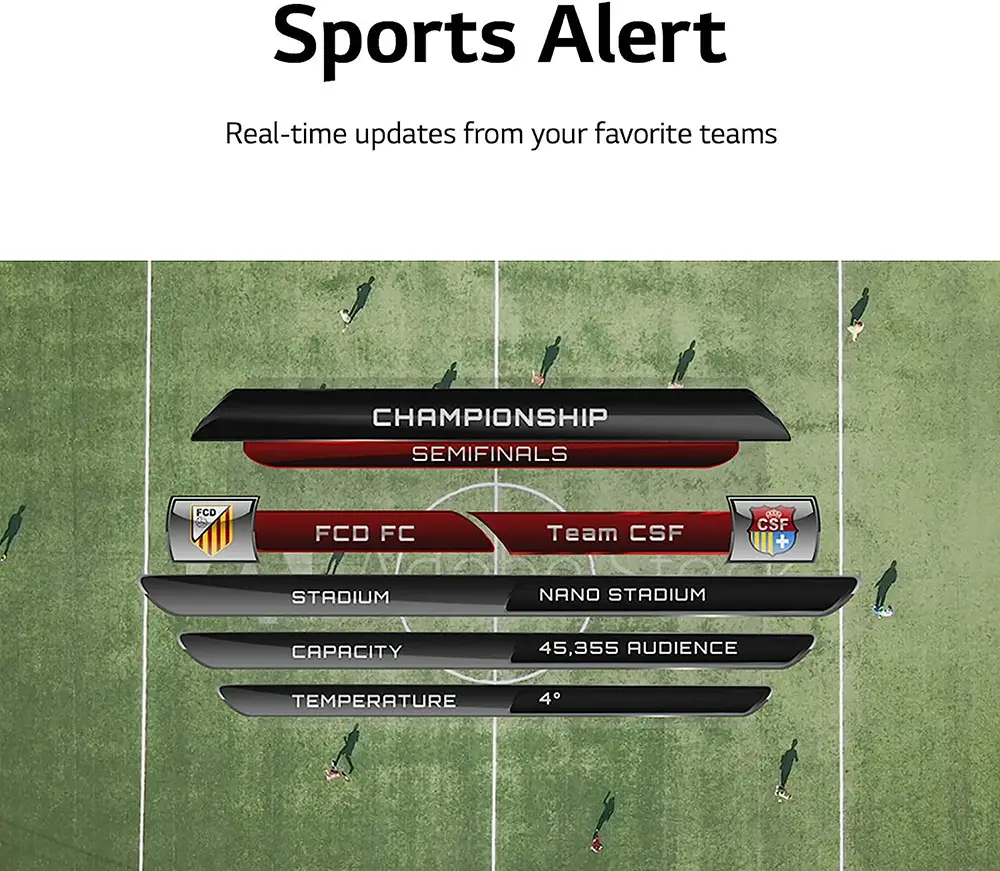
Streaming Capabilities
One thing that hasn’t changed in 2023 is app support. As such you will find all the apps you may need with more available from the online store for downloading. All the big players are present with Netflix, Youtube, Amazon Prime, HBO, Vudu, Hulu, Google Play Movies, Disney+ and Apple TV+ just to name a few of the most notable ones.
Other available apps include Apple Airplay 2 and Apple Homekit. With Airplay 2 you can stream content from other Apple devices on your TV. While HomeKit lets you control certain aspects of the TV through your mobile device.
Sports Alert
Another feature that makes a comeback this year is Sports Alert. You can set your favorite team on the TV and the UR9000 will inform you when a match will be shown. It will also inform you in which channel it is in while it can also give you score updates and the likes.
The Sports Alert feature is working with the internal tuner and it gives you the ability to choose from a wide range of teams and sports.
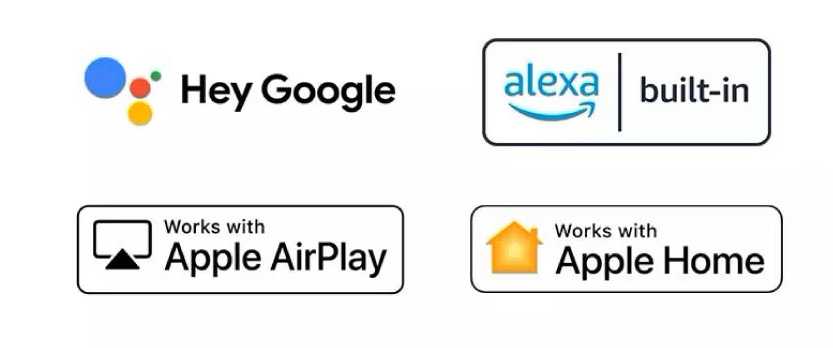
Voice Control
And since we are talking about a smart TV platform we cannot do without voice control functionality. LG has included not only their own ThinQ AI that you can use to search for various information. But also the two most used voice control platforms including Amazon Alexa and Google Assistant.
By using the Magic Remote’s built-in microphone you can issue your commands. These can be search for a specific TV show or control your TVs volume and channels changing.
Keep in mind that while Amazon Alexa is built-in the TV for Google Assistant you will need an external device.
Mobile App Support
There is also mobile app support if you prefer that instead of using the included remote. LG is using their ThinQ app that is supported both by Android and iOS devices. And with it you can issue some basic commands to your TV from your mobile device. Since it is free we suggest you give it a try.

Game Features
LG TVs were always at the forefront of gaming. And some of their dedicated features make them the best gaming TVs you can get. The UR9000 may be a budget TV but it also includes the now famous Game Dashboard & Optimizer menus.
These two menus provide easy access to a wealth of gaming settings without the need to navigate through a myriad of menus. This way you can focus on what matters the most, which is having fun.
And as we mentioned above, there is also support for Cloud Gaming with GeForce Now available.
Compared to other TVs
Compared to the 2022 UQ9000 the new UR9000 is not all that different. LG decided to make some fundamental changes but this didn’t affect the TV’s overall image quality by much.
The switch from a Direct LED backlight to an Edge LED one with local dimming made the TV much slimmer than its predecessor. As far as image quality they have their ups and downs with the UR9000 being brighter and with better contrast but the UQ9000 has better motion and better brightness tracking.
As for comparing the UR9000 with some other brands, from the 2023 releases, it is closer in price to the Samsung CU7000. Comparing these two we cannot say there is a clear winner as each model is better in certain areas. The Samsung seems to fare better in a dark room with a single viewer as its higher contrast and bad viewing angles favor that. On the other hand the LG can do better in a bright room with multiple viewers due to good viewing angles.
From 2022 another competing model is the Hisense U6H which is far superior to the LG UR9000. It has better brightness, better colors and better motion. Viewing angles is the only area where the LG truly is better.
Lastly from Sony we cannot say about their 2023 models as we have yet to try any of them. And from their 2022 lineup there is no TV close to this price range. Even the Sony X80K is far higher in price.
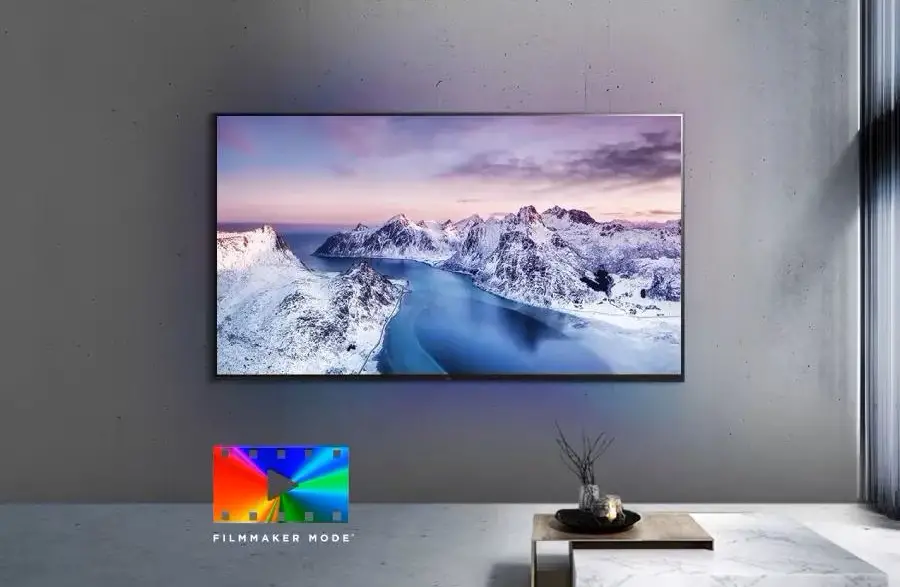
Final Thoughts
The LG UR9000 is your typical low budget TV. LG did some changes this year compared to its predecessor but these did not have a major impact on its performance. There are some differences between the two TVs but if you look at them overall we would consider them equals.
The UR9000 in particular had really good out-of-the-box color accuracy which will be greatly appreciated by casual users. Its viewing angles were great making this one a very family friendly TV. Its input lag was excellent making it an ideal low cost gaming TV. And the included webOS 23 comes with all the bells and whistles you would expect from a smart TV.
On the other hand the TV’s brightness is really low. Its upscaling capabilities were average while the TV displayed major blooming and banding. Its local dimming simply was not good enough. The TV’s blacks looked more grey while its motion performance left a lot to be desired. The TV is also missing Dolby Vision, DTS or HDMI 2.1.
Closing our review what we can say about the LG UR9000 is that if you are looking for an extremely low cost LG TV for casual family use then this one surely fits the bill. It has its fair share of problems but if you don’t care much about image quality then surely it has its merits. And at this price you certainly cannot have high expectations.
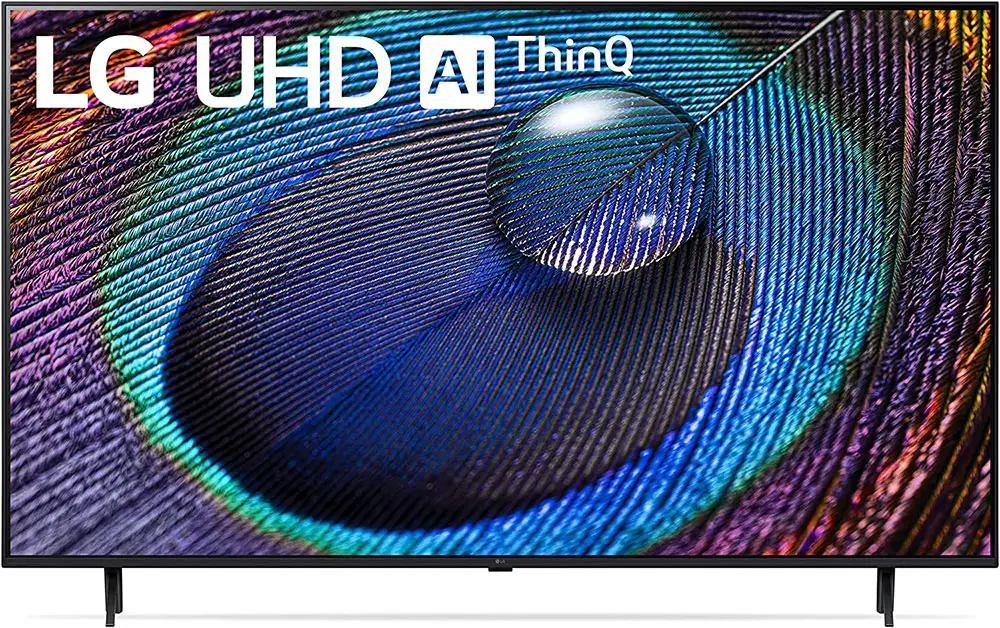
For more reviews you can check our dedicated 4K LED LCD TV reviews section or even look at our Product Reviews Table where you can find the brand and specific product you are looking for.
Cheapest Places to Buy :
*We are a reader-supported website. When you buy through links on our site, we may earn a small affiliate commission at no extra cost to you. Home Media Entertainment does not accept money for reviews.*
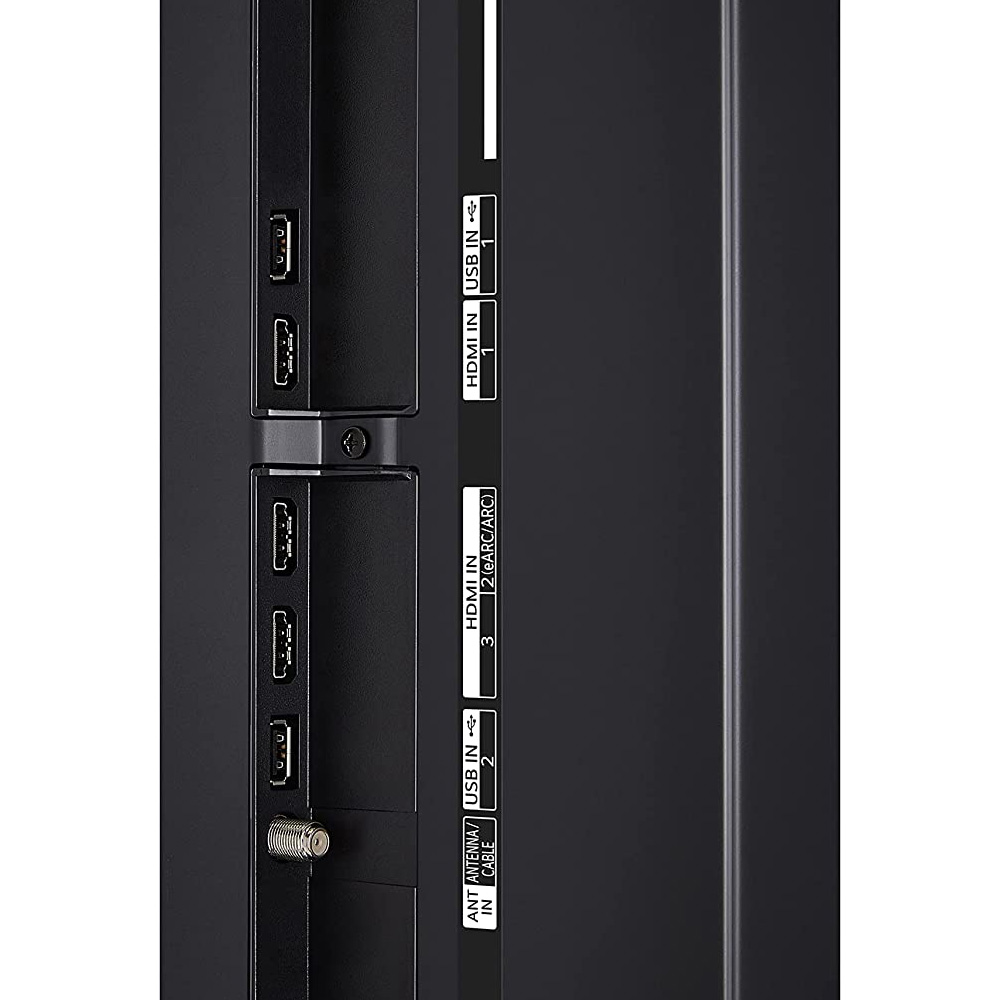
I haven’t been in the market for a new TV for quite some time so I must admit that the price you have quoted here of less than five hundred dollars really knocked me back for a moment.
With the low cost audio system, would you recommend upgrading to home theater sound or is the sound sufficient but just underwhelming?
Hello Joseph. Keep in mind that the UR9000 is supposed to be a budget TV. That’s why the low price. As for sound it depends on the use. For casual use it is just fine. But if you really want home theater sound quality then you definitely need a dedicated audio system.
That’s a pretty decent TV for $499. I live in a small apartment, so I’m only using a 40″ at the moment. But I have been considering something like a 50″ or 55″ for my next one. I’ve had LGs before and like them, so it’s good to see a review on one that I would definitely consider for myself. My biggest consideration – and the reason I’m only using a 40″ – is because of the stand it sits on top of. My HiSense fits on it comfortable, but I concluded that I could have probably squeezed a 43″ on onto it, as well. So, when it comes to a 55,” my main concern is that it might not fit. I notice you mentioned that it had a second location for the feet that was narrower, so I’m wondering if that might work for me. Great review!
Mark
Hey Mark. The narrower position of the stand put the two feet at about 17″ apart from each other. I hope that information helps.
Hi, I’m looking to purchase the 50” version of this tv which should come with the va panel, so i’m hoping for better contrast and darks.
I’m worried about upscaling quality when playing 1080 movies, which is the main use. And i’ll also play retrogames at 720 and 1080p and ps4 games at 1080p.
Alternative is the samsung UE50CU8000, but my instinct is for the lg.
what do you reckon?
Hello Luca. If the 50″ comes with a VA panel then definitely it will have better contrast. But keep in mind that viewing angles will be worse. As for upscaling, the UR9000 may not be on par with some top tier models but it was not so bad either. Especially for 1080p content I would say its performance was good enough for its cost. Obviously we may judge upscaling differently, so I cannot assure you what I find acceptable will be acceptable by your standards also.